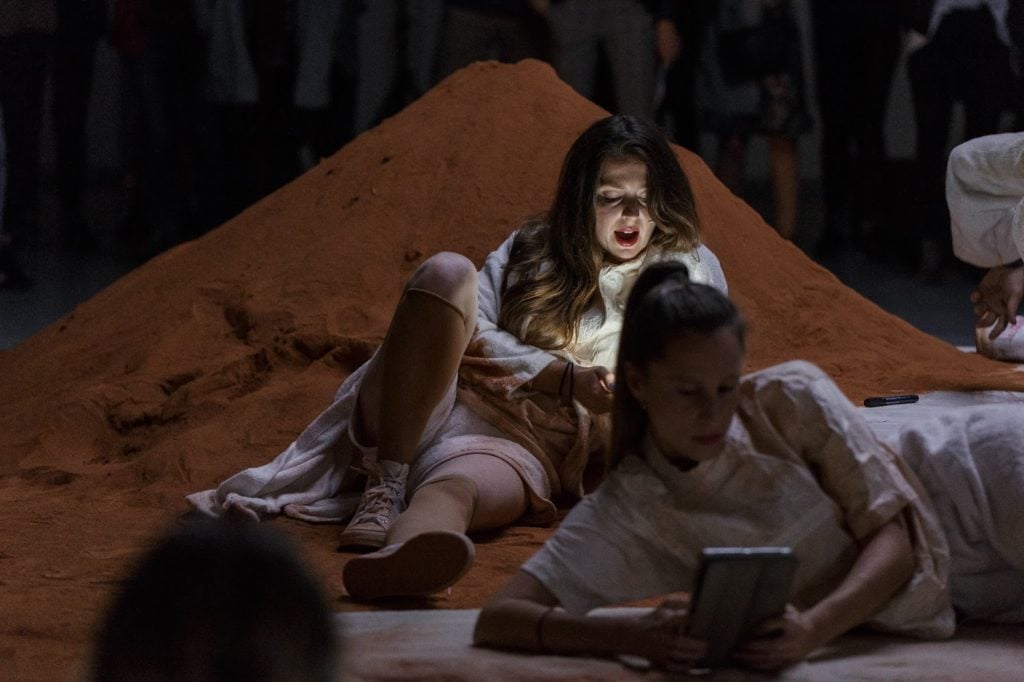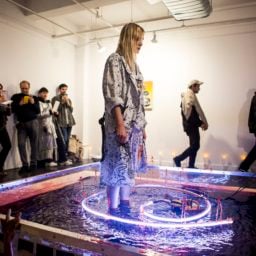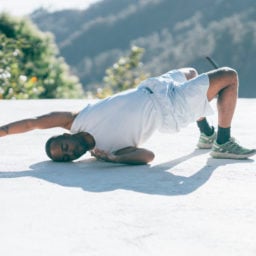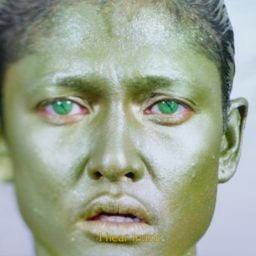Tucked between Russia, the Nordic countries, and the rest of the Europe, the Baltic is a dynamic region on the boundary of East and West with a winding and fascinating past. Comprised of Estonia, Latvia, and Lithuania, the region has propelled itself into the contemporary art world in the past decades, a seismic change since the area shook its Soviet identity in the early 1990s. This year promises to be a big one for these three countries, as each is preparing to celebrate its 100-year jubilee as independent states.
While their corner of Europe can seem in some ways distant and remote, the trio each touts a burgeoning scene and some brilliant institutions that have been drawing more and more international curators, artists, and thinkers. There is also a new generation of young and differently minded curators moving up, who are striving to build even stronger networks between the region and the rest of the world, while nourishing their local scenes and fighting for better and more dynamic forms of support from governments.
They are moving at full speed as a huge year of arts and culture lies ahead, with centenary celebrations underway, the new Riga biennial launching in Latvia, and the Baltic Triennial taking place for the first time ever across the three nations simultaneously. Together yet separate, here are some of the figures who are currently driving the most noteworthy programming in the Baltic.
Lolita Jablonskienė, Chief Curator of the National Gallery of Art in Vilnius, Lithuania
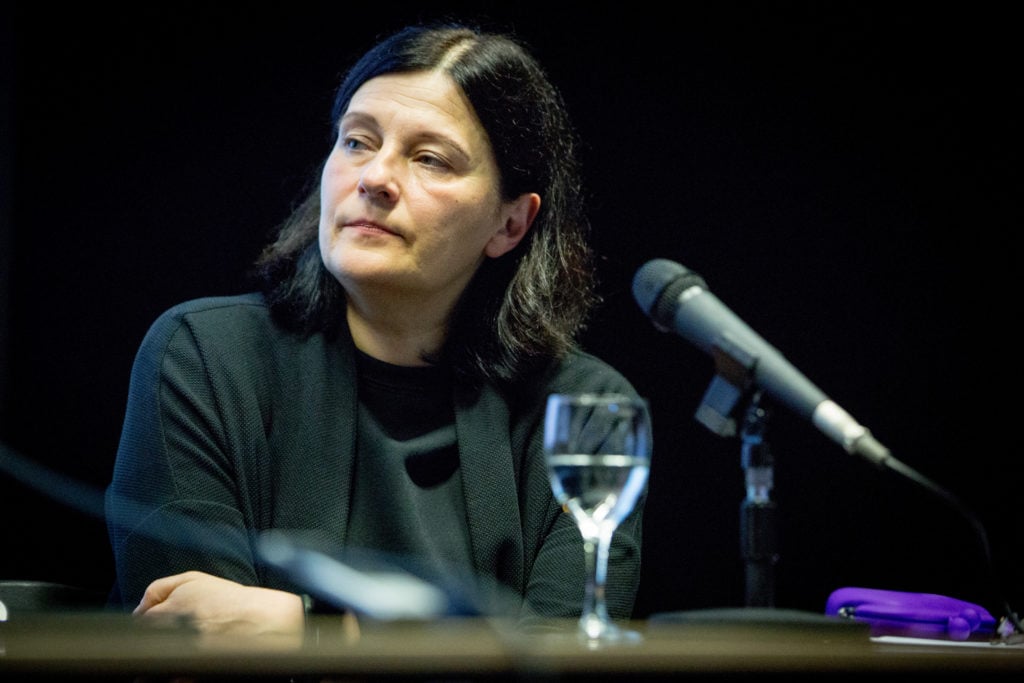
Lolita Jablonskiene. Photo: Vidmantas Balkūnas / 15 min.
A well-respected art critic, educator, and chief curator of one of Lithuania’s most important institutions, Jablonskienė is a veteran in the Lithuanian art scene, having also been Commissioner of the country’s pavilion at the Venice Biennal in both 1999 and 2005.
Jablonskienė has witnessed the dynamic shifts that took place after Lithuania regained independence in 1990, but she tells artnet News that the less evident, though very impactful catalyst for transformation was actually when the country joined the European Union in the early 2000s.
“It is difficult to generalize something like a Lithuanian contemporary art discourse,” Jablonskienė says, adding that “what’s probably perceptible is the engagement of many Lithuanian artists, especially those of the younger generation, in the speculations of the ‘post-’ character: from post-painting, post-photography, and post-internet to post-memory, post-conceptual, post-feminist, etc.” She sees this focus as part of a specific continuum: “The multiplicity of these approaches as well as their persistence brings my thoughts back to the earlier focus on post-Soviet – ‘post-’ is what connects these two periods though the strategic relation to the substance is different.”
In her own work, Jablonskienė and her curatorial team experiment with the museum’s spatial narratives, maintaining an ongoing focus on the representation of female artists, and have presented intriguing projects deconstructing the Cold War period.
“Saints and Scratches” by Deimantas Narkevičius and “Oskar Hansen – Open For” are on view at the National Gallery of Art from December 28, 2017–February 25, 2018.
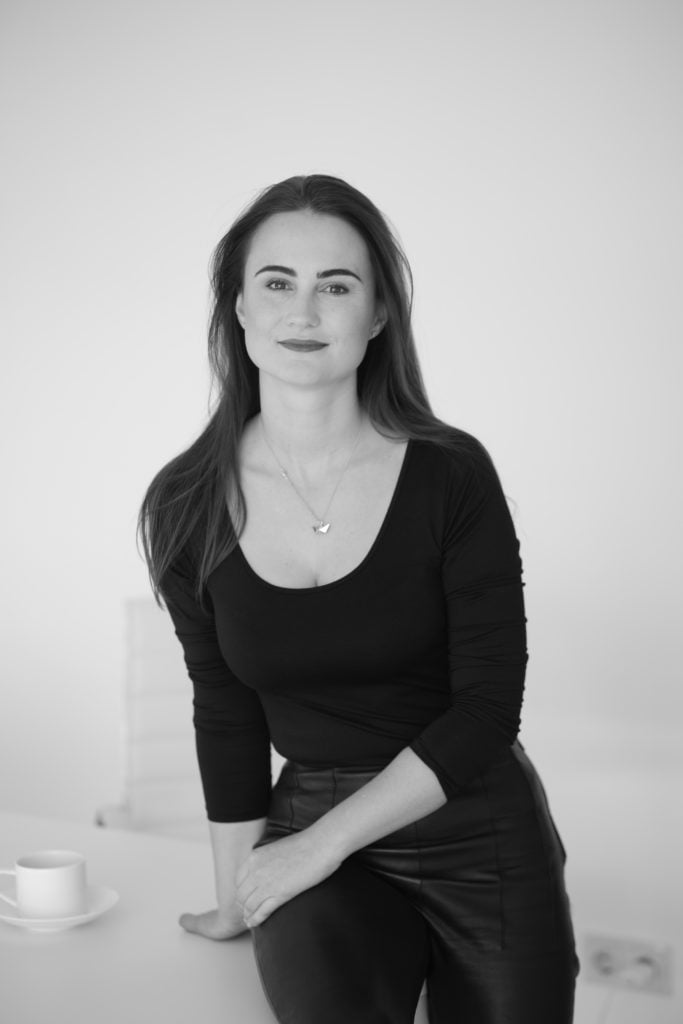
Agnija Mirgorodskaja. Photo: Janis Deinats.
Russian-Lithuanian Agnija Mirgorodskaja has launched the Riga Biennial (RIBOCA)—which takes place for the first time this year—mostly through private family funds, though she hopes to gain partnerships with local organizations and Europe in the coming years.
Opening in June at various locations throughout the city, Mirgorodskaja selected Greek curator Katerina Gregos, independent curator and also the curator of the Schwarz Foundation (Germany/Greece), to take the helm as the inaugural biennial’s chief curator. “Gregos was really the only person we trusted with curating the inaugural edition of RIBOCA,” she tells artnet News.
Aware of the criticism surrounding the proliferation of biennials around the world, Mirgorodskaja explains the urgency for Latvia to gain such an event, as it finds itself at a unique crossroads of historical relations with Sweden, Russia, Poland, and Germany. “Riga is the epicenter of the ever-growing art scene in the Baltic,” she says. “It is the ideal setting to provide a podium for the rich artistic production from the region, which is currently relatively under-explored in the global arts environment despite prolific activity.”
Titled “Everything Was Forever, Until it Was No More,” the exhibition will focus on the phenomenon of change itself in times of rapid acceleration and monumental political and societal shifts. At least half of the artists who will be showing in RIBOCA will be creating newly commissioned works, and Gregos and her team are seeking to strike a balance between Baltic and international artists in order to ensure site-specificity for the project. The artistic program is set to be unveiled in early 2018.
RIBOCA1 will be on view from June 2–October 28, 2018 at several locations throughout Riga, Latvia.
Valentinas Klimasauskas, Program Director of kim? contemporary art center in Riga, Latvia
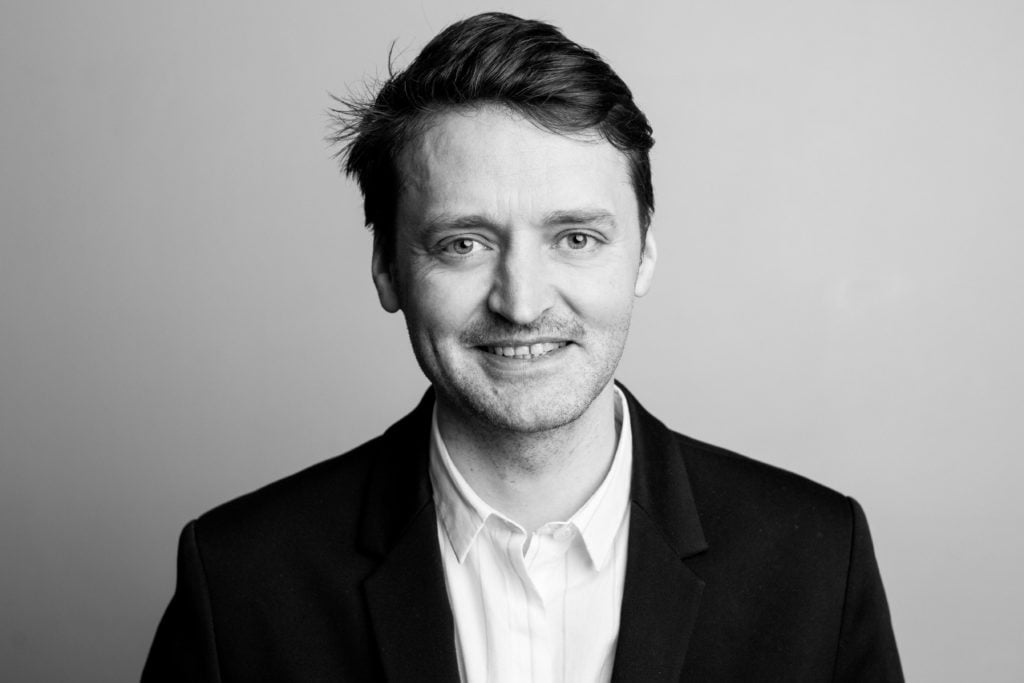
Valentinas Klimasauskas. Photo by Henrik Beck.
Writer and curator Valentinas Klimasauskas worked at the Contemporary Art Center in Vilnius before moving one country over to take the reins at Latvia’s kim?, a dynamic institution that has been growing in acclaim in recent years.
“There is never enough collaboration like there is never enough friendship,” Klimasauskas muses in an email to artnet News. “Thanks to the new information economy, the old understanding of an East–West axis is being reshaped into various interconnected networks. I see more will to collaborate outside of recognized art centers like NYC, London, and Berlin, and to acknowledge localities within the neighborhood.”
Here, the neighborhood is a three-nation nook, but kim? is working hard to forge new collaborative formats beyond the local. Currently, a solo exhibition by American artist Kevin Beasley is on view alongside a project by Lithuanian artist Robertas Narkus. A forthcoming exhibition, “Trauma and survival,” is a group show curated by Czech curator Michal Novotny (director of FUTURA centre for contemporary art in Prague) in collaboration with Bozar Centre for Fine Arts, Brussels, and Bunkier Gallery, Krakow, Poland.
“After entering the EU and NATO, our societies do not vocalize any new political aims except for economical ones. Thus I’d like to see public programming as a tool or a platform to have common dreams,” he explains. “However, our scenes are also very different from those of our Western colleagues. For better or worse, our contemporary audiences are not big enough to be perceived as an anonymous mass, so we may really have an impact on the local scene.”
“The Guest,” a cabaret directed by Robertas Narkus & produced by Autarkia & Kim? Contemporary Art Centre and solo exhibition “Rubbings” by Kevin Beasley are on view at kim? until January 21, 2018.
Justė Jonutytė, Director of Rupert and Independent Curator
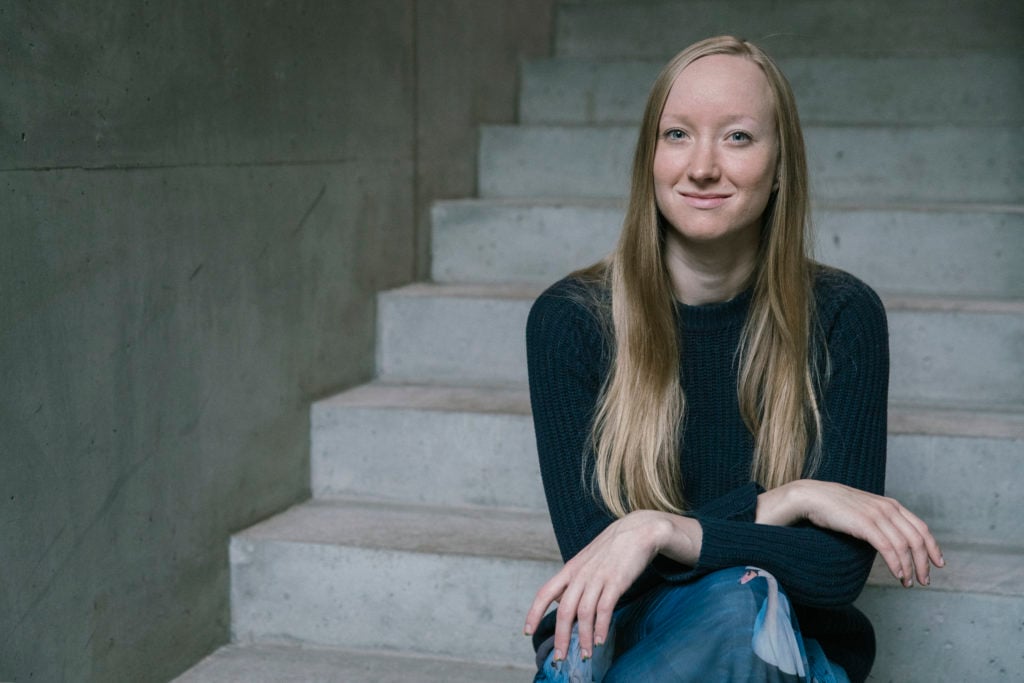
Justė Jonutytė. Photo by Algirdas Bakas.
With previous posts at the Tate Modern in London, Jonas Mekas Foundation in New York, and the Lithuanian Pavilion at the 55th Venice Biennale under her belt, Jonutytė has been building Rupert’s international profile through a dynamic program of exhibitions, talks, and an alternative education program. Since she took over the arts center and residency as director in 2014 (she was formerly its artistic director), Rupert’s program has featured solo exhibitions by names such as Laure Provoust and most recently, the curator organized a solo exhibition by Lithuanian artist Lina Lapelytė which featured a live performance by American musician and composer Charlemagne Palestine. Next year, Jonutytė will present a duo show featuring Lapelytė and Indre Serpytyte at Riga’s kim?.
Jonutytė describes the Baltic scene as a changing one, with its fair share of challenges and highlights. “Things can happen much quicker than in other places. If someone comes up with a new idea for an exhibition or an event, they just need to call a few people and can easily organize a space, equipment, and get to their audience in just a matter of days.”
But there are setbacks, too, like finding the resources, patrons or sponsorship to get projects off the ground when they aren’t accepted by the local cultural council for funding. There’s also ongoing struggles within Lithuania’s cultural-policy makers. “Just recently, the parliament forcefully voided the jury & public vote decision for a sculpture in one of the main squares in Vilnius,” she tells artnet News, “and a nationalistic sculpture was proposed in its stead. And in 2016, important socialist realism sculptures were removed from one of the main bridges in Vilnius by the mayor, who argued they possessed no aesthetic or other value.”
Rupert’s current residents are Jenni Crain, Barbara Cueto, and Luca Vanello.
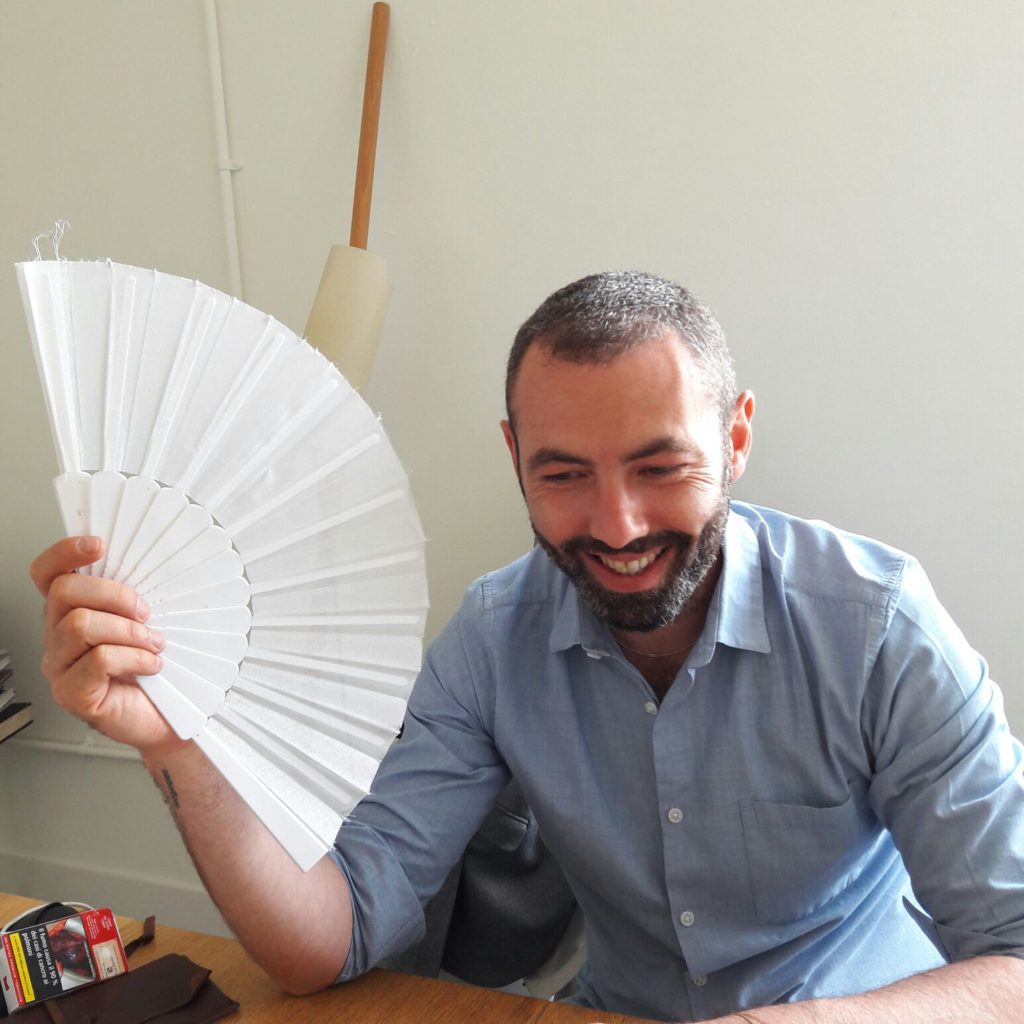
Vincent Honnore. Photo: Joel Riff.
For the 13th Baltic Triennial, which is set to unfold across all three countries for the first time in the show’s history, the London-based curator Vincent Honoré will present a roving exhibition spread between three main hubs: the CAC Vilnius, kim? in Riga, and the CCA in Tallinn. With CAC in Vilnius still working as the Triennial’s main organizer, Honoré’s “Prelude” program was underway throughout the fall at the Lithuanian institution. Though not a local resident—Honoré is a senior curator at London’s Hayward Gallery—the curator is working closely with local art practitioners, building a truly networked exhibition.
“The main challenge has been to approach the Baltic region not as a unity, but as a diversity and to research differences more than similarities,” Honoré tells artnet News via email. Though this year’s edition falls on the centenary celebrations, Honoré says that this triennial will not be a retrospective exhibition, but will rather look to the future while shedding strict notions of categorizations. “There will be a good balance between international and local artists. We are working with a curatorial board, with some curators coming from each of the Baltic countries helping me in my research.”
The 13th Baltic Triennial “Give up the ghost” will open at the CAC in Vilnius, Lithuania in May 2018; June 2018 at the Tallinn Art Hall, Estonia; and September 2018 at Kim? in Riga, Latvia.
Maria Arusoo, Director of the Center for Contemporary Arts, Estonia and Commissioner of the Estonian Pavilion for the 57th Venice Biennial
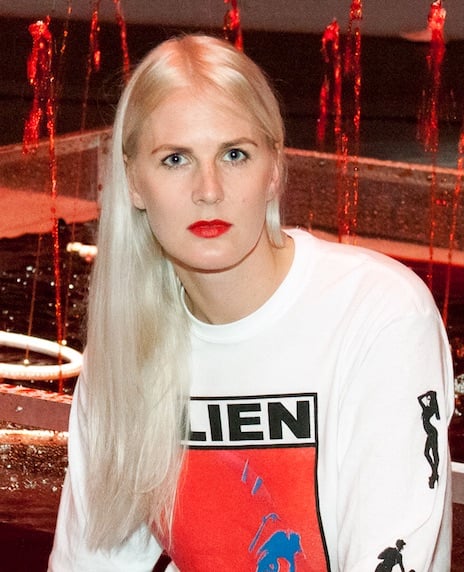
Maria Arusoo. Photo by Mark Raidpere.
Under Arusoo’s directorship, the Estonian institution ran a vibrant lecture program that hosted curator Martha Kirszenbaum in 2017, among others, and will include documenta14 co-curator Dieter Roelstraete, New York-based feminist curator Maura Reilly, and other international voices this year. Arusoo was also commissioner the Estonian pavilion in Venice last year, where Katja Novitskova, presented a sleek exhibition curated by Kati Ilves.
“We do not have the strong influence of the art market but we do have stable public funding–even though it is not too big,” Arusoo tells artnet News. “Therefore, the field is rather open for independent and critical approaches.” She describes a young generation that has taken many directorial positions in the past five years, but one that continues to struggle with a past of under-funding that has plagued Estonia for decades.
She finds Estonia’s art world to have an exciting mixture of post-Soviet identification and an eagerness to become European. “We have still many stigmas which block people off and cause them to diminish the value of contemporary art. One of the problems is that we have almost no relevant art media in the public realm. It’s a vicious circle which lowers artists’ position in society and makes it more complicated to build something up.” she explains. “But I am hopeful; it’s a slow process but at least we are acknowledging shortages and working towards change.”
The Contemporary Art Center Estonia‘s lecture series continues in 2018 with documenta14 curator Dieter Roelstraete (January); poet, art critic, and editor Quinn Latimer (February); curator Lumi Tan (March); art critic Andrew Berardini (April); feminist curator Maura Reilly (May); curator and critic Antonia Alampi (May). The CCA will open their edition of the Baltic Triennial on June 29, 2018.
Virginija Januskeviciute, Deputy Director at the Contemporary Arts Center, Vilnius, Lithuania
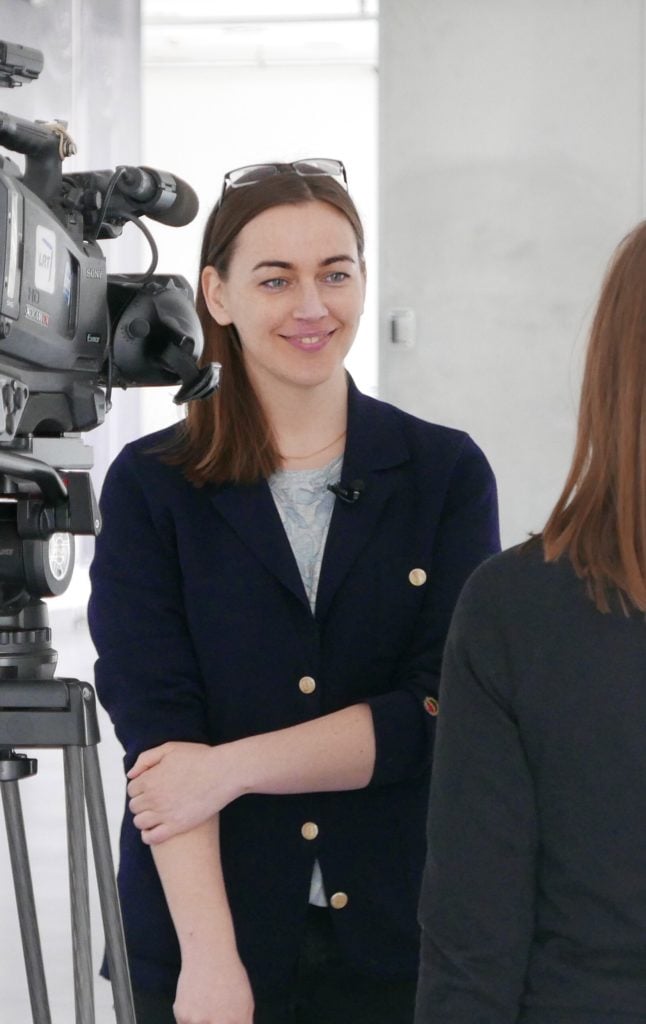
Virginija Januskeviciute. Photo: Algirdas Šeškus.
The Contemporary Art Center (CAC) in Vilnius is a state-funded institution housed in a stunning Brutalist building in the heart of downtown. It is the largest venue for contemporary art in the Baltic States, with an exhibition space of 2400 square meters (about 25,000 square feet) and it even has its own 100-seat cinema.
For the CAC, preparations are well underway for the Baltic Triennial (CAC already hosted the prelude program), a solo exhibition and film retrospective with Thai filmmaker Apichatpong Weerasethakul that is due to open in February, and Januskeviciute is in the final stages of curating a large online project with New York artist Michael Portnoy. The project is produced with Corpus, a network for producing and presenting performance art, which includes KW Institute for Contemporary Art in Berlin and Tate Modern in London among other European institutional members. “It’s exciting to produce something that people around the globe will be able to participate in, from their home,” says Januskeviciute.
2017 was a big year for the institution and its curatorial team, as they were handed a massive new project from the Lithuanian Ministry of Culture: to draw up a vision for an entirely new institution in a huge Baroque palace that is set to open in the next years.
“The infrastructure for arts and culture here has diversified quite radically during the last 10 or even five years, and what changed also made it more clear what’s not happening, and what is likely or unlikely to happen anytime soon,” she tells artnet News. “We’re amidst disputes, for instance, over fees that artists receive or don’t receive from institutions, or if it’s okay to ask artists for something in return for support.”
“The Light is no Brighter at the Center” by Liam Gillick is on view at the Contemporary Art Center in Vilnius until January 14, 2018. CAC’s Reading Room and the Fluxus Cabinet are permanently open, and bookings of Michael Portnoy’s online sessions of “Wrixling” are available on www.wrixling.com.
